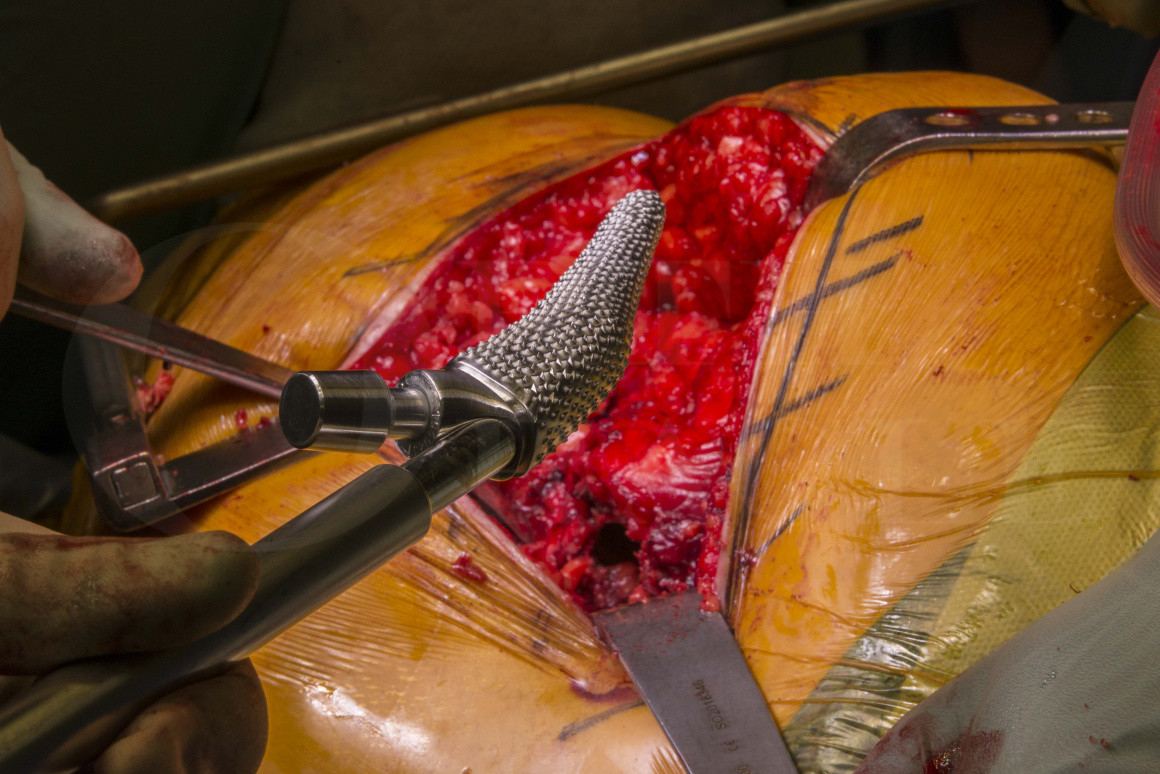Total hip replacement(posterior approach): Symbios custom hip
Overview

Subscribe to get full access to this operation and the extensive Hip Surgery Atlas.
Learn the Total hip replacement(posterior approach): Symbios custom hip surgical technique with step by step instructions on OrthOracle. Our e-learning platform contains high resolution images and a certified CME of the Total hip replacement(posterior approach): Symbios custom hip surgical procedure.
The Symbios custom femoral stem was first implanted in 2007 and to date nearly 500 procedures have been performed. National Joint Registry data reflects its use in younger patients undergoing complex primary procedures with a mean patient age of 46.2 years, compared with 65.3 for all other cementless stems, and 77% having ceramic on ceramic bearings. The cumulative risk of femoral revision at 7 years is quoted at 1.1%, compared with 1.6% for all other cementless stems on the NJR.
I use the Symbios custom femoral stem in patients where an off the shelf implant would not restore the hip biomechanics or where the patient’s existing anatomy precludes the use of a standard implant.
Symbios offer an uncemented HA coated stem with a good track record but the main reason for its use and increasing popularity is the ability to modify the design with ease and work with the engineers to achieve this. The online ‘hip plan’ software allows the surgeon access to the imaging, 3-D plan and engineering comments. This allows the procedure to be meticulously planned, which I think is the key to success in complex primary hip replacements.
Particular attention needs to be given to:
- The anterior pelvic plane, which guides socket orientation.
- The contralateral hip centre of rotation, which can be used determine acetabular and global offset (if that hip is normal).
- The geometry of the proximal femur, which allows measurement of the version and femoral torsion.
- Leg length discrepancy. This can be measured in two dimensions from the CT scout view or in three dimensions using the pelvic intra-articular lengths. Any correction can then be planned in detail and built into the stem design.
A CT scan is required and after segmentation a draft stem design is created. If necessary a bone model can also be produced using additive materials manufacturing. The surgeon and engineer may then discuss and alter the stem design in the coronal, sagittal and axial planes, and the extramedullary hip parameters of neck length, CCD angle, version and mediolateral position.
The advantage of using a custom femoral stem is that it allows the procedure to be planned in great detail pre-operatively to overcome some of the anatomical challenges. Some time is therefore taken in the text to describe these planning steps.
The technical aspects of the procedure and posterior hip approach are similar to other hip replacements and readers will find the following OrthOracle operative techniques also of interest:
Total Hip replacement: Exeter femoral stem and Tritanium acetabular component (Stryker)
Total Hip replacement: Cemented Exeter/Contemporary (Stryker) by a posterior approach
Total Hip Replacement: Birmingham Hip resurfacing (Smith and Nephew)
Total Hip replacement: C stem AMT/Elite (Depuy) cemented hip (femur first)
Author: James Donaldson FRCS (Tr & Orth)
Institution: The Royal National Orthopaedic Hospital, Stanmore, London, UK.
Clinicians should seek clarification on whether any implant demonstrated is licensed for use in their own country.
In the USA contact: fda.gov
In the UK contact: gov.uk
In the EU contact: ema.europa.eu
Online learning is only available to subscribers.



















